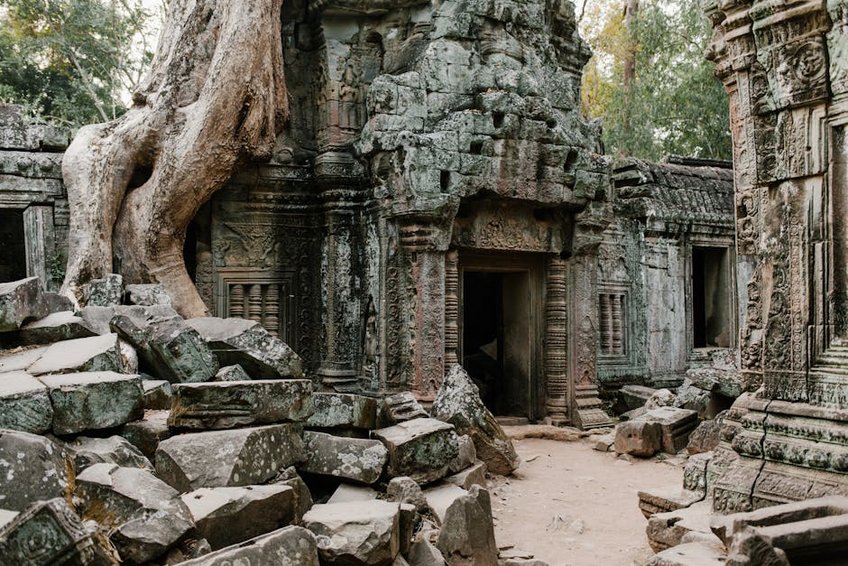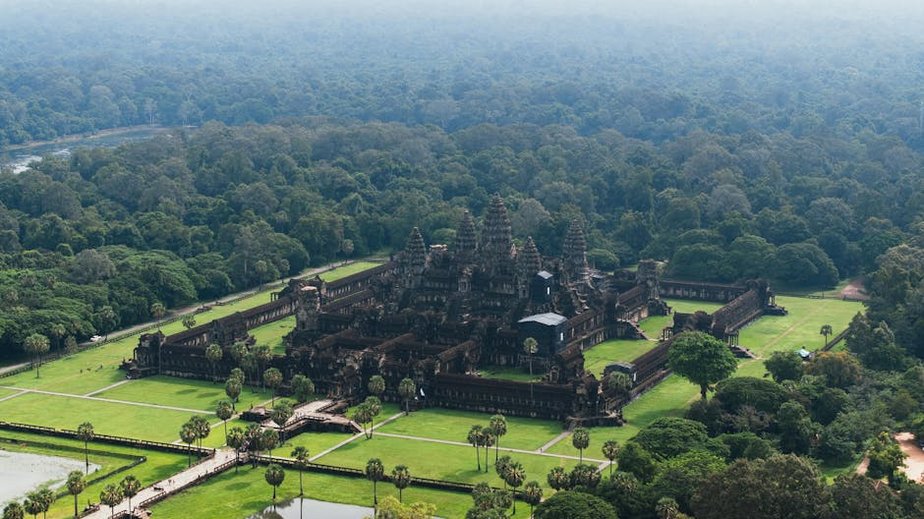Discovering Siem Reap Angkor Wat: The Ultimate Travel Guide
Exploring Siem Reap Angkor Wat offers one of the most profound travel experiences you’ll ever encounter. This magnificent temple complex in Cambodia represents the pinnacle of Khmer architecture and spiritual devotion, drawing millions of visitors annually who seek to witness its awe-inspiring beauty. As you walk through ancient stone corridors and gaze upon intricate carvings depicting mythological scenes, you’ll understand why this UNESCO World Heritage site captures the imagination of travelers worldwide. The combination of historical significance, architectural grandeur, and spiritual atmosphere creates an unforgettable journey that stays with you long after you’ve returned home. Whether you’re a history enthusiast, photography lover, or spiritual seeker, Siem Reap Angkor Wat provides a transformative experience that transcends ordinary tourism and connects you with centuries of human achievement and devotion.
Siem Reap Angkor Wat Essential Information – What Every Traveler Should Know
Before embarking on your Siem Reap Angkor Wat adventure, understanding the fundamental aspects of this destination will significantly enhance your experience. The temple complex spans approximately 400 square kilometers, containing hundreds of temples dating from the 9th to the 15th centuries. Angkor Wat itself, built in the early 12th century by King Suryavarman II, stands as the world’s largest religious monument originally dedicated to the Hindu god Vishnu before transitioning to a Buddhist temple. The entire archaeological park requires careful planning to appreciate fully, with most visitors spending at least three days exploring the major sites. You’ll need to purchase an Angkor Pass which comes in one-day ($37), three-day ($62), or seven-day ($72) options, with the three-day pass being the most popular choice among thoughtful travelers who want to avoid temple fatigue while seeing the highlights properly.
Historical Significance and Cultural Importance
- Angkor Wat represents the architectural and artistic peak of the Khmer Empire, which dominated Southeast Asia from approximately the 9th to 15th centuries
- The temple’s design symbolizes Mount Meru, the home of the gods in Hindu mythology, with its five towers representing the mountain’s peaks
- Unlike many ancient temples, Angkor Wat was never completely abandoned, maintaining continuous religious significance for over nine centuries
- Budget travelers can manage on $30-50 per day by staying in hostel dormitories, eating at local markets, and using bicycle transportation to the temples
- Mid-range visitors spending $80-120 daily enjoy comfortable hotels with pools, restaurant meals, tuk-tuk transportation, and guided temple tours
- Luxury experiences at $200+ per day include boutique resorts, fine dining, private guides, and special experiences like helicopter tours over the complex
- Official Angkor Enterprise website for temple pass information and regulations
- Lonely Planet Cambodia guide for comprehensive travel information
Practical Visiting Details – Timing and Preparation
Planning your Siem Reap Angkor Wat visit requires consideration of several practical factors that will make your experience more enjoyable. The temple complex opens at 5:00 AM for sunrise viewings and closes at 6:00 PM, with specific temples having varying hours. You’ll want to arrive early not only for the famous sunrise but to avoid the intense midday heat and crowds that typically arrive around 9:00 AM. Comfortable walking shoes are absolutely essential as you’ll be covering significant distances on uneven surfaces. Light, breathable clothing that covers shoulders and knees is required for temple entry, though many visitors bring a change of clothes for the heat. Hiring a knowledgeable guide ($25-40 per day) greatly enhances the experience by providing historical context and helping navigate the massive complex efficiently.

Siem Reap Angkor Wat Planning Your Trip – Seasonal Strategies and Budgeting
Strategic planning transforms your Siem Reap Angkor Wat visit from a simple tourist excursion into a deeply rewarding journey. The timing of your visit dramatically affects your experience, from crowd levels to photographic opportunities and physical comfort. Cambodia’s tropical climate means you’ll encounter distinct seasons each offering different advantages. The dry season (November to March) provides cooler temperatures and minimal rainfall, making it the most popular time despite higher prices and crowds. The shoulder months (April-May and September-October) offer a balance of reasonable weather with fewer visitors, while the rainy season (June-August) brings lush landscapes and dramatic skies with significantly reduced crowds. Regardless of when you visit, early mornings remain the golden hours for photography and peaceful contemplation before the day’s heat and crowds arrive.
Best Time to Visit Siem Reap Angkor Wat
The optimal time for experiencing Siem Reap Angkor Wat depends largely on your priorities and tolerance for heat and crowds. November through February offers the most comfortable weather with temperatures ranging from 20-30°C (68-86°F) and minimal rainfall, though this coincides with peak tourist season. March to May brings increasing heat with temperatures often exceeding 35°C (95°F), making early morning visits essential for comfort. The rainy season from June to October transforms the landscape with vibrant green vegetation and reflective moats, though afternoon showers are common. December and January provide the clearest skies for sunrise photography, while September offers smaller crowds with still-manageable weather conditions. For the ideal balance of weather, crowds, and photography conditions, late November or early February typically provide the best overall experience.
Budget Planning and Costs for Siem Reap Angkor Wat
Essential Preparation Checklist
Proper preparation ensures your Siem Reap Angkor Wat experience remains comfortable and memorable. Begin by checking visa requirements for Cambodia, available as e-visas for most nationalities ($30-36) valid for 30 days. Ensure your passport has at least six months validity remaining and several blank pages. Vaccinations for hepatitis A and typhoid are recommended, and malaria prophylaxis may be advisable if visiting rural areas. Pack lightweight, breathable clothing that covers shoulders and knees for temple entry, along with a wide-brimmed hat, high-quality sunscreen, and insect repellent. Comfortable walking shoes with good support are non-negotiable given the extensive walking on uneven surfaces. Bring a reusable water bottle to stay hydrated, and consider a power bank for your devices since you’ll be out exploring all day.
Siem Reap Angkor Wat Top Attractions and Activities – Beyond the Main Temple
While Angkor Wat rightly claims center stage, the surrounding archaeological park contains numerous spectacular sites that deserve your attention. The entire complex represents one of the most important archaeological sites in Southeast Asia, with each temple offering unique architectural styles and historical significance. Beyond the iconic main temple, you’ll discover jungle-enveloped ruins, intricate bas-reliefs telling ancient stories, and architectural innovations that demonstrate the Khmer Empire’s remarkable engineering capabilities. A well-planned itinerary allows you to experience the diversity of this UNESCO World Heritage site, from the massive faces of Bayon Temple to the jungle-covered mystery of Ta Prohm where massive tree roots intertwine with ancient stonework. Each temple tells a different chapter of the Khmer Empire’s story, creating a comprehensive picture of this sophisticated civilization’s achievements.
Must-See Highlights in the Angkor Complex
Your Siem Reap Angkor Wat experience should include several essential sites beyond the main temple to fully appreciate the scope of Khmer architecture. Angkor Thom, the last capital of the Khmer Empire, encompasses several significant structures including the Bayon Temple with its 216 massive stone faces gazing serenely in all directions. Ta Prohm, famously featured in Tomb Raider, offers a magical atmosphere with silk-cotton trees growing dramatically through the stone ruins. Banteay Srei, known as the “Citadel of Women,” features some of the finest and most intricate carvings in the entire complex despite its smaller size. Preah Khan serves as a extensive monastic complex with impressive corridors and carvings, while Phnom Bakheng provides the classic sunset viewing spot over Angkor Wat. Each of these sites offers unique photographic opportunities and distinct architectural styles worth exploring.
Hidden Gems and Local Favorites
Beyond the well-trodden tourist path, Siem Reap Angkor Wat hides several lesser-known treasures that offer more intimate experiences away from the crowds. Beng Mealea, located about 40 kilometers from the main complex, presents a largely unrestored temple engulfed by jungle that gives a sense of how early explorers might have encountered these ruins. Banteay Samré features well-preserved architecture similar to Angkor Wat but with significantly fewer visitors, allowing for peaceful contemplation. The Roluos Group, including Preah Ko and Bakong, represents some of the earliest permanent temples built by the Khmer Empire, offering insight into the evolution of their architectural style. For a completely different experience, consider visiting the floating villages on Tonlé Sap lake or exploring the Cambodian Cultural Village to understand contemporary Khmer culture beyond the ancient temples.
Siem Reap Angkor Wat Practical Travel Information – Transportation and Accommodation
Navigating Siem Reap and the Angkor Wat complex requires understanding the local transportation options and accommodation landscape to maximize your comfort and experience. The town of Siem Reap serves as the perfect base for temple exploration, offering everything from budget hostels to luxury resorts within easy reach of the archaeological park. Transportation to the temples primarily occurs via tuk-tuk, with drivers available for hire by the day ($15-25) who will efficiently shuttle you between temple sites. Bicycle rentals ($2-5 per day) provide a more immersive experience for physically fit travelers, while private cars with air conditioning ($30-50 per day) offer comfort during the hottest months. The compact nature of Siem Reap means most amenities remain within walking distance of your accommodation, with Pub Street serving as the bustling center of tourist activity with numerous dining and entertainment options.
| Accommodation Type | Features and Location | Price Range (USD per night) |
|---|---|---|
| Budget Hostels | Dormitory rooms, social atmosphere, near Pub Street | $5-15 |
| Mid-Range Hotels | Private rooms, swimming pools, restaurant service | $30-80 |
| Boutique Resorts | Traditional design, spa services, tranquil settings | $100-200 |
| Luxury Properties | Five-star amenities, fine dining, exceptional service | $250-500+ |


